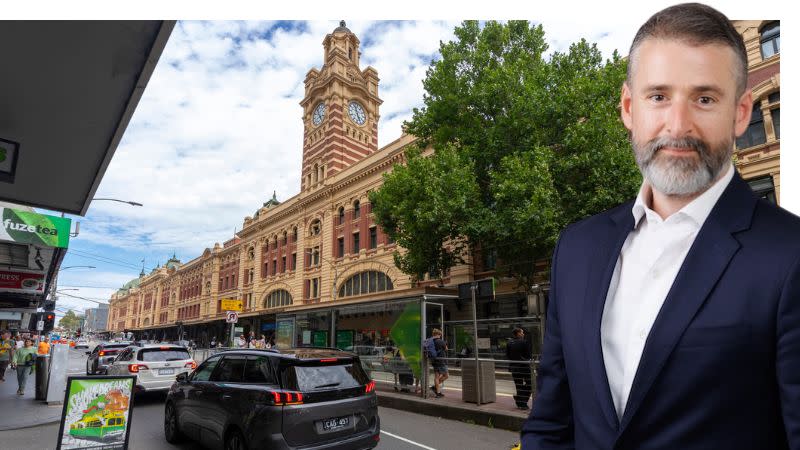
The vacancy rate in Australian offices has tightened, according to fresh data, with more than half of capital city CBDs posting a decrease.
However, for the cities on the other side of the ledger, the news is far from encouraging.
According to the Property Council of Australia’s July 2024 edition of the Office Market Report, overall office vacancy rate across Australia fell from 14.8 per cent to 14.6 per cent over the six months to July.
That’s 4.2 percentage points above the historical average.
The twice-yearly report showed demand for office space was positive in CBD and non-CBD markets, the first time both were in positive territory since January of last year.
The report revealed while vacancy in CBDs stayed stable, marginally increasing from 13.5 to 13.6 per cent nationally, non-CBD areas fell, from 17.9 to 17.2 per cent.

Brisbane’s vacancy decreased from 11.7 to 9.5 per cent, the first time its vacancy rate has been under 10 per cent since January, 2013.
Sydney’s CBD office vacancy rate fell from 12.2 to 11.6 per cent and Adelaide had a drop from 19.3 to 17.5 per cent.
But for the other capitals, the vacancy rate increases were significant, none more so than Melbourne’s—up to 18 per cent from 16.6 per cent.
Canberra’s increased from 8.3 to 9.5 per cent, and Perth’s lifted from 14.7 to 15.5 per cent, all largely driven by new supply of quality office space, according to the report.
PCA chief executive Mike Zorbas said the figures were encouraging.
“There is room for very cautious optimism in parts of the office market,” Zorbas said.
“In our CBDs, office supply is continuing to be a driving force for vacancy levels as demand for office space has been positive.
“This demonstrates businesses still see a CBD location as the best place to do business.
“In the past three years, four of the six reporting periods have recorded positive demand for office spaces in our CBDs. In Adelaide and Brisbane, demand is currently 5.9 and 2.7 times their historical averages, respectively.
“We continue to see a preference for high-quality office spaces, with Sydney and Adelaide the only capitals to record higher prime vacancy than secondary vacancy.

“Some of the older, lower-grade office buildings that are in lower demand are now being withdrawn from the market to be repurposed through refurbishments or converted into residential spaces or hotels.”
“Of note, Melbourne still faces stiff challenges. The Victorian Government simply has to get some of its workforce back a few days a week to support what must again be a thriving city,” he said.
Sublease vacancy, a measure of business confidence reflected by businesses renting out parts of their office space, decreased in the CBD and non-CBD markets as Adelaide, Sydney and Melbourne all recorded sublease vacancy decreases.
Most of the nation’s additional new supply planned to become available in the second half of 2024 will be in the Sydney market, with close to 300,000sq m of office supply set to come online through to 2026, with 61.4 per cent of that supply already pre-committed (tenants already secured).
Nearly 250,000sq m is forecast to come online in Melbourne by 2026, with 20 per cent of that space already committed to by future tenants.
The supply of office spaces in the CBDs was projected to stay above the historical average until January 2026, the report said, while the supply in non-CBD markets will also remain near or above the historical average during the same period.
Colliers managing director, office leasing Australia, Cameron Williams said there were “some positive signs now emerging across Australia’s office markets with vacancy declines more prolific than increases”.

Williams said a pause in major new supply within some markets, such as Sydney and Brisbane, coupled with resilient leasing activity across markets driven by occupiers pursuing a higher quality of office accommodation, was allowing vacancy to recover.
“Relocation opportunities across Sydney and Melbourne’s CBDs have contributed to stronger leasing activity over the second quarter within these markets,” he said.
“This has resulted in a 10 per cent increase in overall CBD leasing volumes when comparing Q2 24 to Q2 23.
“Continued momentum in the recovery of deal activity YoY within the 3000sq m-plus range (+37 per cent), alongside consistent growth in SME activity (+6 per cent) is set to underpin another year of growth in gross leasing activity over 2024.
“Beyond 2024, more mooted supply pipelines will continue to have an impact on the recovery of Australia’s office markets.
“From 2025 the pipeline is scarce with development feasibilities under pressure as construction costs remain elevated and the required pre-commitment level harder to achieve.
“Only 254,200sq m of supply additions are forecast for 2025, 60 per cent below the 10-year annual average. We expect the lack of new supply to create tighter vacancy conditions across prime grade.”